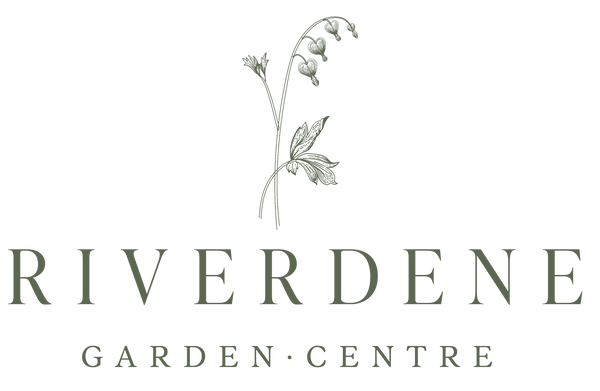Riverdene Garden Center
Boreal Beast Honeyberry - 'Haskap'
Boreal Beast Honeyberry - 'Haskap'
Couldn't load pickup availability
Lonicera caerulea ‘Boreal Beast’
Boreal Beast is a cold-hardy, late-blooming honeyberry variety bred in Canada. It is prized for its sweet, firm, and large blue berries, making it an excellent choice for fresh eating, jams, baking, and freezing. Boreal Beast is a vigorous, disease-resistant shrub and serves as an essential pollinator for other late-blooming honeyberries, especially Boreal Beauty and Boreal Blizzard. It is well-suited for home gardens and commercial fruit production in Southwest Saskatchewan.
Planting & Location
- Hardiness Zone: 2-7 (extremely winter-hardy, thrives in prairie climates)
- Mature Size: 5-6 feet tall, 4-5 feet wide
- Growth Habit: Upright, bushy, and dense
- Sunlight Needs: Full sun to partial shade (best fruit production in 6+ hours of direct sun)
-
Soil Preference:
- Prefers well-drained, loamy, or sandy soil.
- Tolerates clay and slightly acidic to neutral pH (5.5-7.5).
- Avoid waterlogged soils, as honeyberries dislike excess moisture.
- Spacing: 4-5 feet apart for hedging, 6+ feet apart for individual bushes.
-
Pollination Requirement:
- Self-incompatible (needs another honeyberry for pollination).
- Best pollinators: Boreal Beauty and Boreal Blizzard.
- Planting a mix of these varieties increases fruit set and yield.
Watering
- Young Plants (First Year): Water deeply 1-2 times per week to establish roots.
- Established Shrubs: Requires consistent moisture during flowering and fruiting (spring to early summer).
- Drought Tolerance: Moderate once established, but yields improve with regular watering.
Fertilizing
- First Year: No fertilizer is needed—focus on root establishment.
-
Mature Shrubs:
- Apply a slow-release balanced fertilizer (e.g., 10-10-10) in early spring to encourage strong growth and fruiting.
- Organic alternative: Compost, well-rotted manure, or fish emulsion in early spring.
- Avoid excessive nitrogen, as it promotes leafy growth at the expense of berries.
Pruning & Maintenance
- Best Time to Prune: Late winter to early spring, before new growth starts.
-
How to Prune:
- Remove dead, damaged, or weak branches to encourage airflow and sunlight penetration.
- Thin out older stems every 3-5 years to promote new, vigorous growth.
- Maintain an open-center structure to improve fruiting.
Flowers, Fruit & Harvesting
- Bloom Time: Early spring (April-May) (yellow, tubular flowers attract pollinators)
- Fruit Ripening: Mid to late summer (July-August)
-
Berry Characteristics:
- Large blue elongated berries, firmer and sweeter than older honeyberry varieties.
- Excellent for fresh eating, jams, smoothies, baking, and freezing.
- Yield: High-yielding; mature plants can produce 8-12 lbs (3.5-5.5 kg) of fruit per bush.
-
Harvesting Tips:
- Honeyberries do not all ripen at once—check for deep blue color inside and out before picking.
- Best harvested by hand or using a berry rake.
Pest & Disease Management
Resistant to: Cold, deer, and most diseases
Common Pests:
-
Aphids – Can cause curled leaves and reduce vigor.
- Solution: Spray with insecticidal soap or introduce ladybugs.
-
Sawfly Larvae – Can chew on leaves in late spring.
- Solution: Hand-pick or use Bacillus thuringiensis (Bt) spray if infestation is severe.
-
Birds – Love honeyberries and will eat them before they're ripe.
- Solution: Use bird netting or plant in a protected location.
Common Diseases:
-
Powdery Mildew – Can appear in humid conditions.
- Solution: Improve airflow and apply fungicide if needed.
-
Root Rot – Caused by excess moisture in heavy soils.
- Solution: Ensure well-drained soil and avoid overwatering.
Winter Protection
- Highly winter-hardy—no special protection needed in Zone 2-7.
- Mulching: Apply 2-4 inches of mulch around the base to retain moisture and regulate soil temperature.
- Rodent Protection: If rabbits or rodents are an issue in winter, use a tree guard or hardware cloth around the base.
Landscape & Uses
Perfect for edible hedges, home orchards, and permaculture gardens
Attractive flowers provide early-season interest and support pollinators
Compact and productive, making it ideal for small gardens
Can be grown in large containers
One of the best honeyberries for fresh eating due to its firm texture and sweetness
Additional Notes:
- Boreal Beast is a key pollinator variety and should be planted with Boreal Beauty and Boreal Blizzard for optimal fruit production.
- Lifespan: 20+ years with proper care.
- Works well in home gardens, commercial berry farms, and as a fruiting hedge.
Photo courtesy of Vanstone Nurersies
Share


